
You Can't Do That on Television is a Canadian sketch comedy television series that aired locally in 1979 before airing in the United States in 1981. It featured adolescent and teenage actors performing in a sketch comedy format similar to America's Rowan & Martin's Laugh-In and Canada's Second City Television. Each episode had a specific theme, typically relating to the popular culture of the time.

Whatever Happened to... Robot Jones? is an American animated television series created by Greg Miller for Cartoon Network. It follows Robot Jones, a teenage robot who attends the fictional suburban Polyneux Middle School in a retrofuturistic version of the 1980s. Episodes follow Robot Jones researching aspects of human life, including music, facial hair, and gym class. Jones is guided by his three friends, Socks, Mitch, and Cubey. Robot Jones is often smitten with his crush, Shannon Westerburg, a tall, young girl with orthodontic headgear and a prosthesis. In school, Robot Jones interacts with his teachers, Mr. McMcMc, Mr. Workout, and Mrs. Raincoat; the principal, Mr. Madman; and janitor Clancy Q. Sleepyjeans. His arch-rivals, Lenny and Denny Yogman, try to sabotage Jones's research by making school more difficult for him.

ABC Kids was an American Saturday morning children's programming block that aired on ABC from September 13, 1997 to August 27, 2011. It featured a mixture of animated and live-action series from Walt Disney Television Animation and Disney Channel, aimed at children between the ages of 6 and 14. This was the only time Disney Channel content aired on over-the-air television in the United States.

Nick at Nite is an American nighttime programming block on the basic cable channel Nickelodeon. The programming broadcasts from prime time to late night. The block initially consisted of syndicated sitcoms and films from the 1950s to the 1970s. Nick at Nite gradually shifted its programming to primarily airing sitcoms as recent as the mid-1990s to the 2010s.
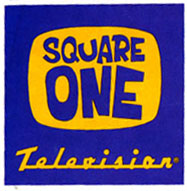
Square One Television is an American children's television program produced by the Children's Television Workshop to teach mathematics and new abstract mathematical concepts to young viewers.

Peep and the Big Wide World (PATBWW) is an animated children's television series created by Danish-Canadian animator Kaj Pindal. It revolves around the lives of Peep, Chirp, and Quack, as viewers discover, investigate, and explore the world around them.
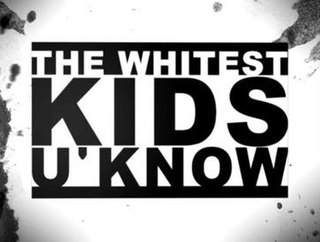
The Whitest Kids U' Know (WKUK) is an American sketch comedy television series starring a comedy troupe of the same name. The group consisted of Trevor Moore, Zach Cregger, Sam Brown, Timmy Williams and Darren Trumeter, though other actors occasionally appeared in their sketches. They were accepted into the HBO U.S. Comedy Arts Festival in 2006 and won the award for Best Sketch Group.
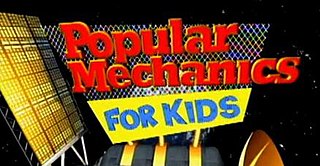
Popular Mechanics for Kids is a Canadian educational television program based on the Popular Mechanics magazine. The program aired on Global TV from 1997 until 2000, with re-runs airing on BBC Kids Canada until its closure in 2018. Original cast included Elisha Cuthbert, Jay Baruchel, Tyler Kyte, Vanessa Lengies, and Charles Powell.
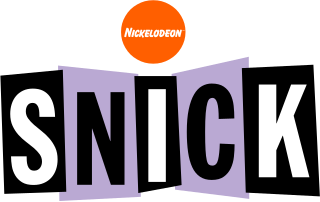
SNICK was a two-hour programming block on the American cable television network Nickelodeon, geared toward older audiences, that ran from August 15, 1992, until January 29, 2005. It was aired on Saturdays starting at 8 p.m and ending at 10 p.m. ET, with a replay on Sundays from 5 p.m. to 7 p.m. In 2005, SNICK was revamped as the Saturday night edition of TEENick. Nickelodeon continued to run a Saturday night programming block until 2021, though since the TEENick name was removed from the lineup in February 2009, the block no longer went by any name.

The Good Night Show is a defunct television programming block for preschoolers that aired on the Sprout channel. It was designed to help preschoolers get ready for bedtime. The block featured recurring themes based on preschoolers' nightly routines, such as dreams, brushing teeth, and cleaning up before bed.
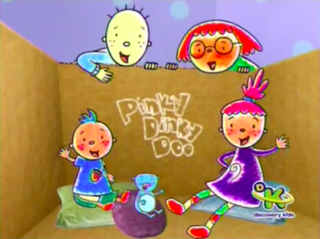
Pinky Dinky Doo is an animated children's television series created by Jim Jinkins. It was produced and co-owned by Jinkins' Cartoon Pizza and Sesame Workshop. The series was made in association with Discovery Kids Latin America, and the Canadian Broadcasting Corporation. For the second season, Abrams Gentile Entertainment, and the Canadian studio Keyframe Digital Productions joined as production companies. Each episode follows an imaginative pink-haired girl named Pinky Dinky Doo, her brother Tyler and pet Mr. Guinea Pig as she makes up her own stories.
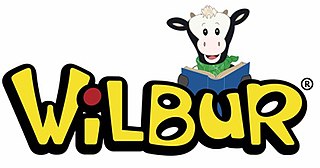
Wilbur is a Canadian live-action/puppet animated children's television series that premiered in the Kids' CBC block of CBC Television on October 30, 2006. In the United States, it first aired on the Ready Set Learn! block on Discovery Kids on April 16, 2007, later moving to TLC starting on April 23, 2007, airing until March 21, 2008.

Braingames is an American educational program shown on HBO in the mid-1980s. It was a half-hour program consisting of brain-teasing animated skits designed to make the viewers think. It was HBO's first attempt at a show focused on educational skits, predating Crashbox by 15 years.
Vice News Tonight is an American news program that aired on Vice TV on Thursday nights at 10 p.m. It was originally broadcast on HBO as the channel's first-ever daily series, premiering October 10, 2016. HBO cancelled the series after three seasons, ending September 2019. The program was relaunched in 2020 on the Vice TV network. In April 2023, Vice announced that Vice News Tonight would be cancelled, with its final show airing on May 25.

Universal Kids is an American children's television channel owned by the NBCUniversal Media Group division of NBCUniversal, which is a wholly owned subsidiary of Comcast.

Esme & Roy is an animated children's television series created by Dustin Ferrer and Amy Steinberg. The series is produced by Canada-based animation studio Nelvana and Sesame Street producer Sesame Workshop, in association with Corus Entertainment.
HBO Kids was an American preschool/children's television morning programming block operated by Home Box Office, Inc. (HBO), a division of Warner Bros. Discovery. The block ran on HBO Family, HBO's sister station that targets children and families.

The Not-Too-Late Show with Elmo is an American late-night talk show hosted by the Muppet character Elmo. It is a spin-off of Sesame Street and was developed exclusively for the HBO Max streaming service. The series, consisting of 13 episodes, debuted on HBO Max on May 27, 2020. The first three episodes were available at launch, after which new episodes were premiered weekly. Each episode runs for 15 minutes. In March 2021, the series was renewed for a second season which premiered on September 30, 2021, when the show moved to the service's Cartoonito section. However, in August 2022, the series was removed from HBO Max. The series aired on PBS Kids from February 10, 2023, to May 10, 2024.
Magnet was a children's programming block aimed to preteens that aired on HBO Family. It first aired on August 26, 2001 alongside Jam, a block made for preschoolers. Until 2004, the block aired on afternoons and evenings at 5pm to 7pm every day.
















